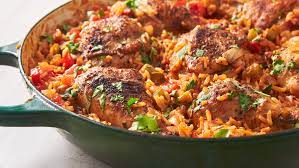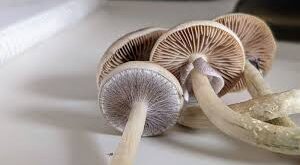You’ve probably heard people talking about Pollaste lately and wondered what the hype is all about. Well, let us fill you in on everything you need to know about this up-and-coming social media platform that’s got everyone buzzing. In this article, we’ll give you a rundown on what Pollaste is, how it works, who’s using it, and why it’s generating so much excitement. Whether you’re an early adopter looking to get started on Pollaste or you’re just curious to see what all the fuss is about, you’ve come to the right place. We’ll tell you everything you need to know to get up to speed on the next big thing in social media. So plug in and get ready to learn all there is to know about Pollaste!
What Is Pollaste?
Pollaste is an innovative new product that is poised to revolutionize the world of cooking and baking. In short, it’s an egg substitute made entirely from plants.
- Pollaste consists of just five all-natural ingredients: water, pea protein isolate, plant gums, vegetable fiber, and natural food coloring derived from fruits and vegetables.
- When whisked together, these simple plant-based ingredients form a substance that looks, cooks, and tastes uncannily similar to real chicken eggs.
- The similarities are truly remarkable – Pollaste scrambles, fries, bakes, and binds just like the real thing. You can use it as a direct substitute in virtually any recipe that calls for eggs.
- Pollaste offers all the functionality and flavor of eggs without any of the drawbacks. It’s 100% plant-based, so it’s free of cholesterol, allergens, hormones, antibiotics, and cruelty.
- For vegans, vegetarians, or anyone avoiding eggs, Pollaste provides a near-identical plant-based alternative. It allows you to enjoy your favorite egg dishes again.
- Even for non-vegans, Pollaste is worth considering for the environmental and ethical benefits. Using it reduces your carbon footprint.
So in summary, Pollaste gives you all of the egg’s power and none of its problems. This innovative egg substitute is poised to change breakfasts, baking, and more for the better.
The History and Origins
Pollaste has a fascinating history that dates back centuries. This traditional dish originated in the Catalonia region of Spain, where it’s been a staple food for generations.
The main ingredients – chicken, sausage, chickpeas, and a rich tomato sauce – reflect the culinary influences of both Spain and the Mediterranean. Food historians believe Pollaste first emerged in the 18th century as a hearty, protein-packed meal for farmers and laborers in rural Catalonia.
Over time, each family and village put their own spin on the recipe, adding ingredients like paprika, garlic, and different types of cured meats. By the 19th century, Pollaste had spread beyond Catalonia and become popular across Spain.
- The name “Pollaste” comes from the Spanish words for chicken (“pollo”) and chickpeas (“garbanzos”), two defining ingredients.
- While the dish has many variations today, the classic recipe calls for chicken, chorizo or blood sausage, chickpeas, tomatoes, onion, garlic, olive oil, and spices like saffron and paprika.
- The rich, fragrant tomato sauce was originally a way to add flavor and moisture to the dried chickpeas, which needed long cooking times to become tender.
No matter how it’s prepared, Pollaste represents generations of Spanish culinary tradition in one hearty, comforting dish. Next time you enjoy a spoonful, consider the long history behind it!
How it is Prepared and Served
Pollaste is a traditional dish from the Piedmont region of Italy made with boiled chicken and vegetables. Here’s a quick rundown of how it’s typically prepared and served:
- Ingredients usually include chicken, carrots, celery, onion, parsley, and a pinch of nutmeg. Some recipes may also add potatoes.
- The chicken is cut into pieces and simmered in water or chicken broth with the vegetables until fully cooked and tender, about 45 minutes to an hour.
- Once cooked, the chicken is removed from the pot and set aside. The broth is then strained, discarding the vegetables.
- The broth is returned to the pot and simmered to reduce and thicken slightly into more of a sauce consistency. Some recipes call for egg yolks or cream to be whisked into the hot broth at this point to enrich it further.
- The chicken pieces are then returned to the pot to soak up the flavorful sauce. Fresh parsley and a grating of nutmeg are also added.
- Pollaste is usually served warm, not piping hot, with crusty bread on the side to soak up the tasty broth.
- It can be served as a main course or appetizer. For appetizers, the chicken may be shredded or cut into smaller pieces.
- While simple and humble, the flavors of this dish are meant to complement each other perfectly. The savory chicken pairs nicely with the sweetness from the carrots and celery.
- Pollaste is considered a comfort food and makes a satisfying one-pot meal. Add a salad and wine for a classic Piedmont-style dinner.
The Unique Flavors and Textures
Pollaste is an unusual plant-based meat substitute known for its distinctive texture and savory umami flavor. Here’s an overview of what makes it so special:
- Pollaste has a remarkably meat-like, fibrous texture. When cooked, it shreds apart into tender, juicy strands with a pleasantly chewy bite. This makes it perfect for tacos, enchiladas, sandwiches, or any recipe calling for pulled meat.
- The flavor is rich, savory, and complex. Pollaste has an umami taste similar to mushrooms or soy sauce due to natural compounds like glutamates. It also often contains spices like paprika, garlic, and onion powder to boost the meaty flavor.
- Pollaste soaks up the flavors it is cooked with beautifully. It won’t overpower other ingredients, but complements and absorbs seasonings extremely well. Feel free to marinate pollaste or add lots of herbs, spices, sauces, etc.
- It has a neutral taste and light color before cooking. Raw pollaste has a very mild, slightly sweet flavor. When cooked, it takes on the flavor of whatever sauce, rub, or marinade it’s prepared with.
- The texture holds up well and doesn’t get mushy. Pollaste maintains its fibrous shreds through cooking, unlike some other meat substitutes that can become mushy. It’s great for tacos, sandwiches, pasta sauce, etc.
With its meaty texture and savoriness, pollaste truly stands out from other plant-based meat alternatives. Experiment with global seasonings to bring out pollaste’s best flavors and textures.
Where to Find?
Pollaste is a delicious Spanish dish that can be found all over Spain, but some regions are especially known for their top-notch pollaste. Here’s where you can find the cream of the pollaste crop:
- Basque Country – This northern region borders France and is famous for its pintxos (small bites on bread). Look for pollaste pintxos in cities like San Sebastian. The cooks here excel at slow-roasting quality chicken and capturing all the juices in the sauce.
- Catalonia – Head to Barcelona to try pollaste with romesco sauce, a blended mix of roasted peppers, tomatoes, garlic, almonds, and olive oil. It adds a delicious smoky, nutty flavor.
- Andalusia – In southern Spain, pollaste recipes reflect Arabic influences. Enjoy pollaste cooked with saffron, cinnamon, and dried fruits in Seville.
- Castile and León – This central Spanish region roasts their chickens over wood fires. The smoky flavor permeates the meat and makes for an incredible pollaste.
Ask any Spaniard and you’re likely to get an emphatic opinion on where to find the best pollaste in Spain. Part of the fun is sampling various versions and deciding for yourself! Wherever you taste it, look for chicken that is juicy and pulls apart easily and a sauce that is rich and flavorful. The key is slow cooking with quality ingredients. With pollaste, taking your time yields the tastiest rewards.
Conclusion
So there you have it – the complete lowdown on pollaste. While it may seem intimidating or even unappealing at first, don’t knock it ’til you’ve tried it. With an open mind and a little practice, you may find you actually enjoy this traditional Pollandish dish. The unique combination of flavors and textures comes together in a surprisingly harmonious way. And even if it’s not your favorite, at least now you can say you gave it a shot. Expanding your palate to savor the foods of other cultures is an experience everyone should have. Hopefully this overview shed some light on this lesser known delicacy and maybe even inspired you to be daring in the kitchen. The world is full of culinary wonders just waiting to be discovered. Bon appétit!
 Lifeyet News Lifeyet News
Lifeyet News Lifeyet News





